Inside the Sumptuous ‘Shōgun’ Costumes That Tell a Rich Story All Their Own
For a project as historically and culturally specific as FX’s epic drama “Shōgun,” which takes place in feudal Japan in 1600, costume designer Carlos Rosario knew the success of his work depended on meticulous research. He and his team worked with historians specializing in the Sengoku period and studied paintings from the era. “That was as accurate as we could get,” Rosario told TheWrap. “I didn’t want to watch many Japanese movies of that period because I felt that was also an interpretation of the director, of the Japanese costume designer.”
An adaptation of James Clavell’s 1975 novel that was previously made into a 1980 miniseries starring Richard Chamberlain, “Shōgun” is the story of rival warlords whose games of political chess are upended by the arrival of John Blackthorne (Cosmo Jarvis), a British pirate the locals dub “Anjin” (pilot). Since many of the characters are inspired by real figures well known to Japanese people — including Hiroyuki Sanada’s Lord Toranaga — Rosario also pored over historical documents and museum pieces.
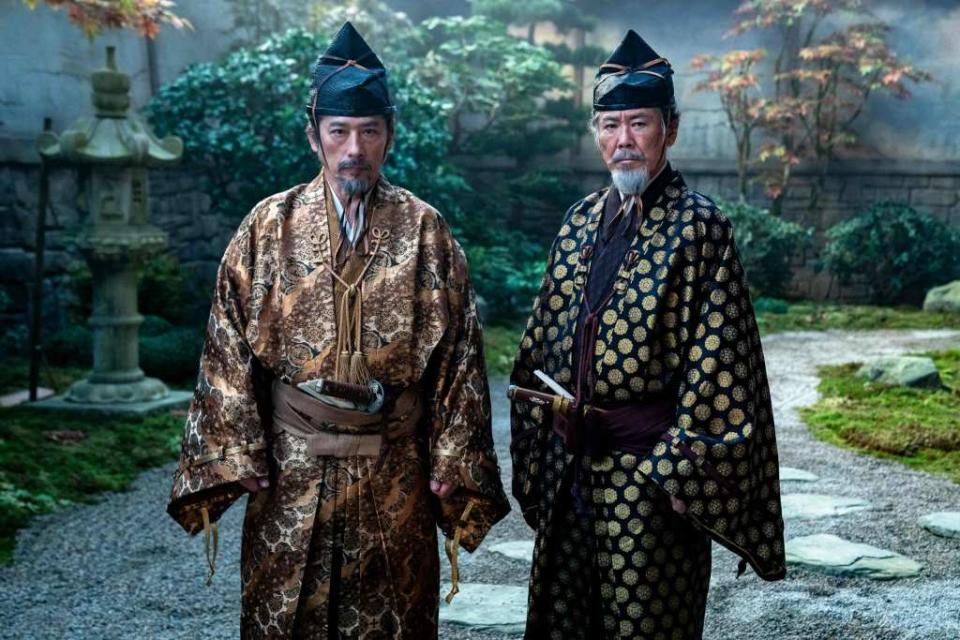
“We started learning from them and studying their armors,” he said. “And then, slowly, it was really about understanding the language of the clothing of that period — understanding the different ranks, the subtleties.”
For instance, noblewomen indicated their status by the number of layers they wore. And since cotton was rare at the time, Rosario only used it to make tabi (traditional socks) for the all-powerful taikō and his family. “We [wanted to] be as accurate as possible to respect the Japanese culture and to help the audience immerse themselves into this world,” Rosario said.
To tackle the logistics of a show that features more than a dozen major characters and hundreds of extras, all of different ranks and all depicted in a variety of locations and circumstances that call for specific garb, Rosario began by organizing everyone into groups and giving them a color palette and textile: earthy indigo and gray hemp for the villagers in Ajiro, more colorful patterned silks and linens for the citizens of Osaka and sumptuous silk brocades in rich metallics, burgundies, reds and blues for the nobles inside Osaka castle.
When it came time to produce the clothing, Rosario sourced all textiles (down to the tassels and cording) directly from Japan. He and his team also rented several pieces of traditional Japanese clothing so they could study how the garments were constructed and reproduce them properly. Many items required embroidery, appliqués and weaving that, done by hand, took weeks to finish.
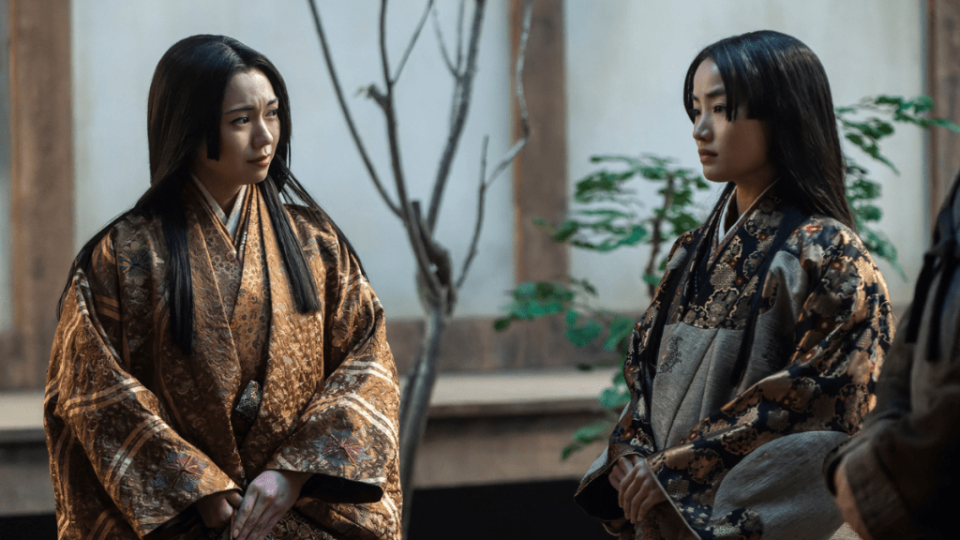
In the end, the 125-person costume department produced thousands of garments lovingly covered in meaningful details: warlords’ jinbaoris in textured leather reminiscent of tree bark; a green dragon etched into the armor of backstabbing Lord Yabushige (Tadanobu Asano); Lady Ochiba’s (Fumi Nikaidô) five layers of clothing compared to Lady Mariko’s (Anna Sawai) four. If these details go unnoticed by casual viewers, Rosario doesn’t mind.
“When you do your best for everything, it builds up an energy around you where people are passionate and motivated,” he said. “It’s contagious. Everybody on set and in the other departments were suddenly realizing we’re doing something very special. So even though sometimes you don’t see it, you can feel it. It’s there.”
Here, a closer look at three main characters’ costumes.
Lord Toranaga (Hiroyuki Sanada)
The Japanese superstar who also produced “Shōgun” plays the brilliant strategist several steps ahead of his enemies. Rosario dressed him in luxurious silks of chocolate brown, copper, burgundy and gold to showcase his wealth and power. One of Rosario’s favorite pieces is the peacock feather-embellished jinbaori, or vest, that Toranaga wears over his armor during a decisive battle. Rosario’s team first made a version for the young Toranaga (Kai Coulter) seen in Episode 8, hand-stitching dozens of peacock feathers to the vest. “It really is the beginning of the story of Toranaga and the end,” Rosario said.
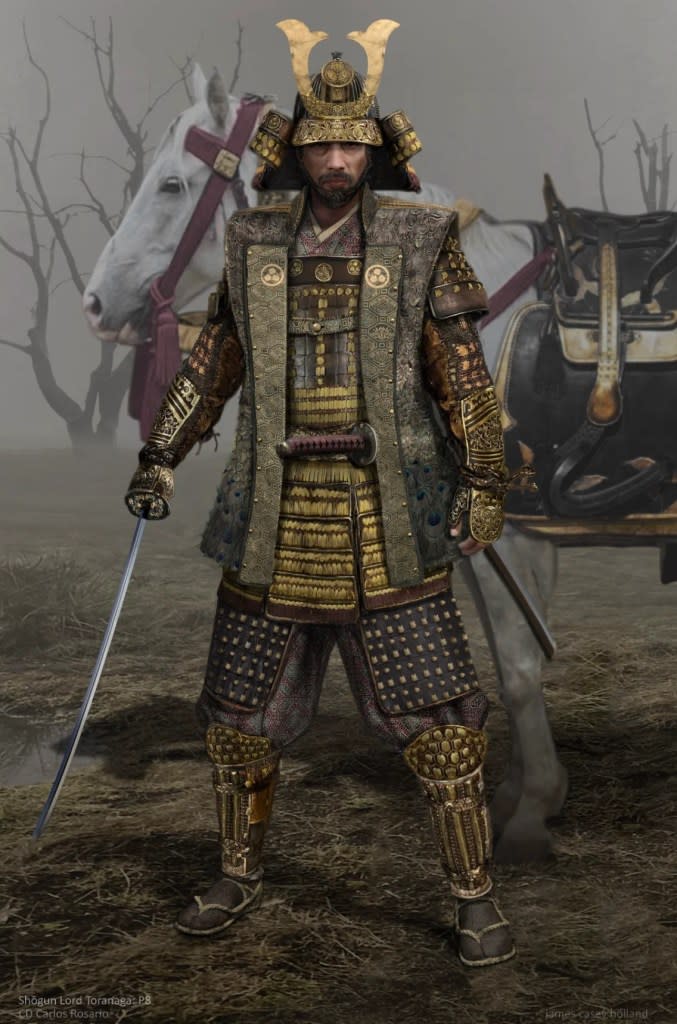
Lady Mariko (Anna Sawai)
More than any other character, Lady Mariko’s wardrobe reflects her story arc. Unhappily married and wishing only to commit seppuku (suicide) to join her deceased family, she appears in icy white coats called uchikakes and kosodes (the precursor to the kimono) covered with leafless branches in the beginning.
But as she finds her inner strength and grows close to Blackthorne as his translator, lifeless trees give way to blooming camellias. “Slowly she’s opening herself to this new path. Slowly, more colors, more patterns come,” Rosario said. Later in the series, Mariko also wears a spectacular gold patchwork uchikake made from leftover fabric. “I love that one because all the fabrics that we found were so expensive and so beautiful, so I didn’t want to lose any scrap,” Rosario said.
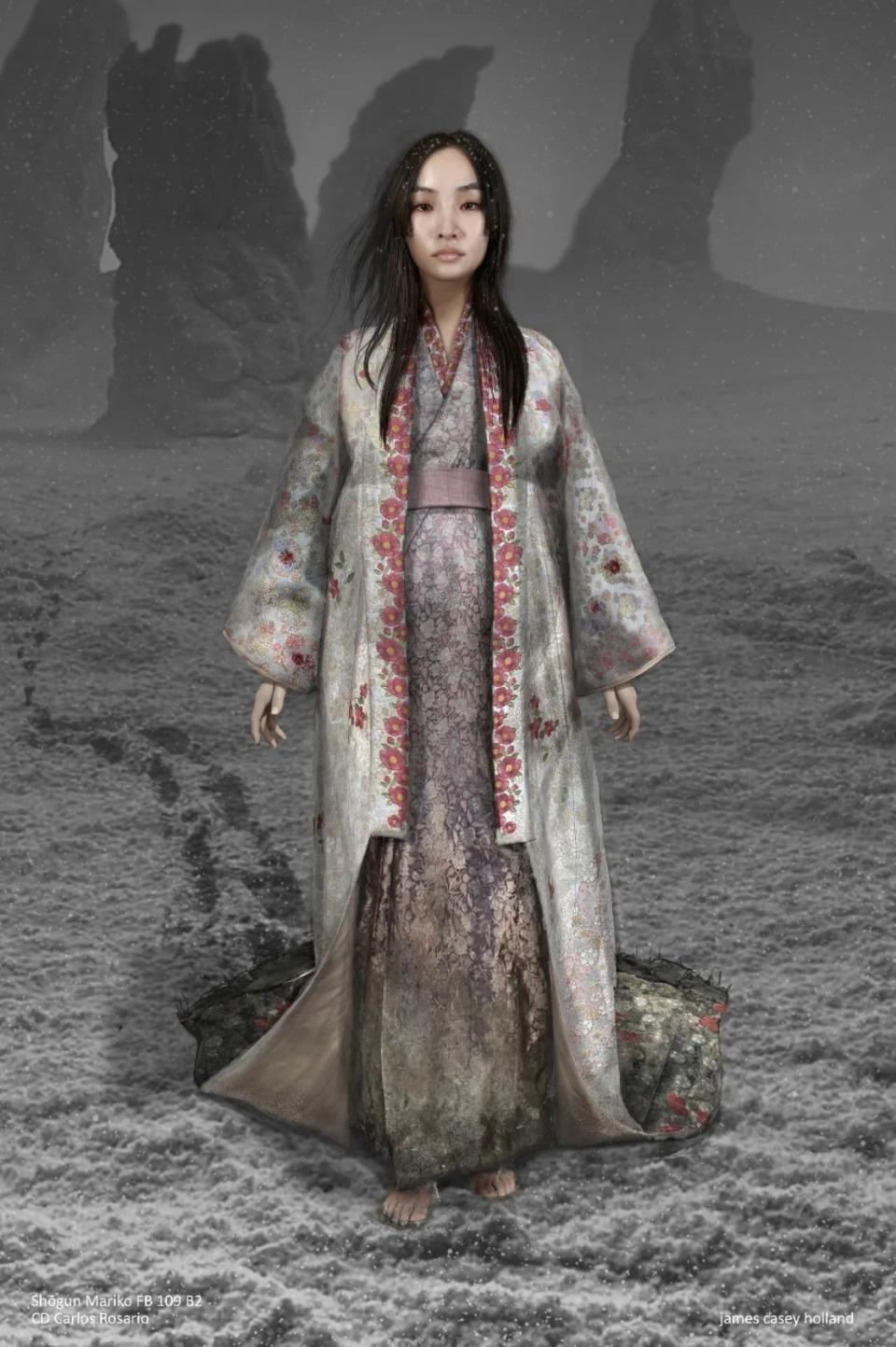
Kashigi Yabushige (Tadanobu Asano)
The slippery lord (played by Tadanobu Asano) whose allegiance tends to go whichever way the winds of power are blowing breaks a lot of rules, according to Rosario: “He’s this very complex, interesting character that you never know where he’s at. And so I felt like if somebody is like that, he would dress in a very different way than everybody else, maybe in a less classic way. I wanted to do something for him that was a bit more showy.”
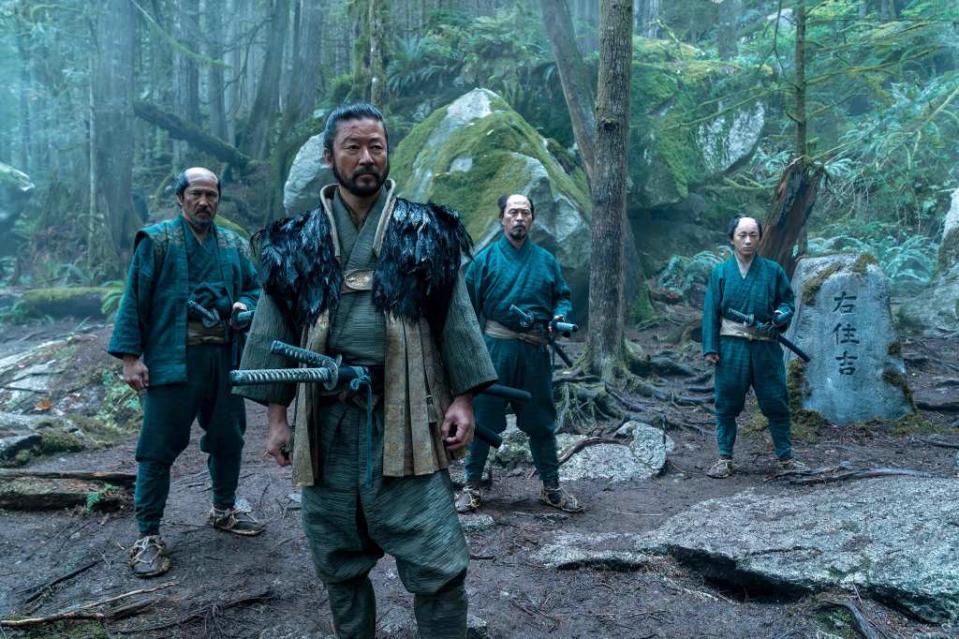
That included the black feathers meant to evoke a raven. “I wanted an organic natural element from nature to be part of his clothing,” Rosario said. “But also, he was sort of like a rock-and-roll star, so that jinbaori design feels to me like a big fur coat.”
John Blackthorne/Anjin (Cosmo Jarvis)
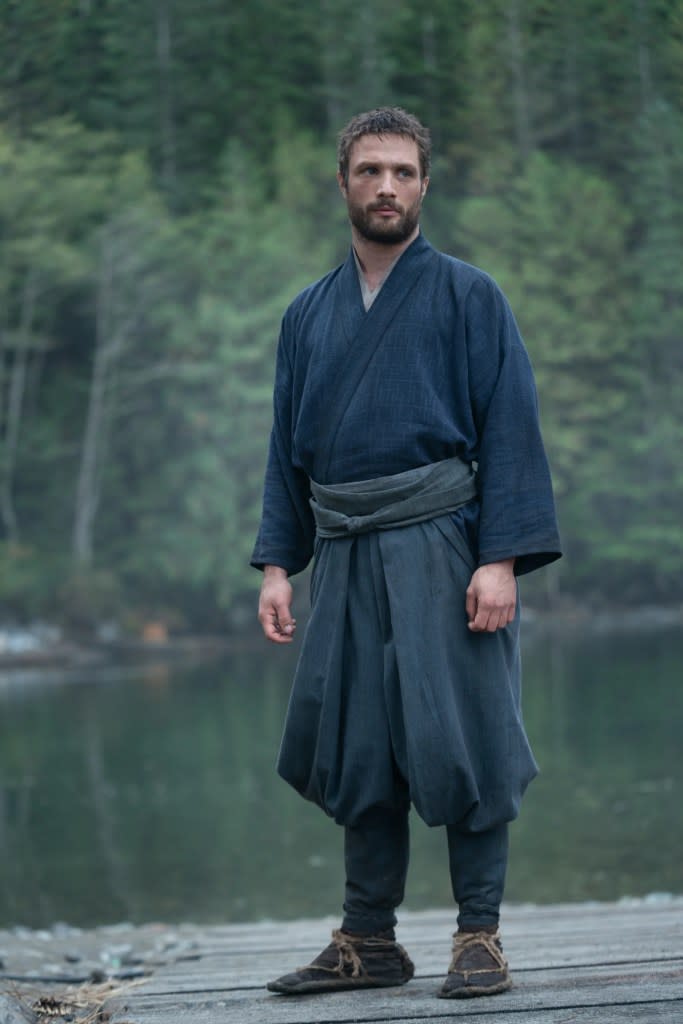
When the British pirate’s ship washes up on the shores of Izu, local forces replace his European britches and shirt with a simple kosode, stripping him of his identity (and presumed superiority). He finds the clothing restrictive and uncomfortable, which only emphasizes his foreignness. “It was very important to keep all the colors muted, very simple because even though he’s one of the lead characters, he’s very powerless in that world. I wanted to create a contrast between him and everybody else,” Rosario said.
As Blackthorne integrates into Japanese culture and improves his standing in Toranaga’s clan, his wardrobe becomes more refined. In Episode 8, he wears a very formal green kataginu (samurai’s vest) with gold stripes that are a nod to a costume worn by the last person who played Anjin. “I told [showrunner] Justin Marks, ‘We have to do this one because it’s an homage to Richard Chamberlain.’”
This story first ran in the Drama Series issue of TheWrap’s awards magazine.Read more from the issue here.
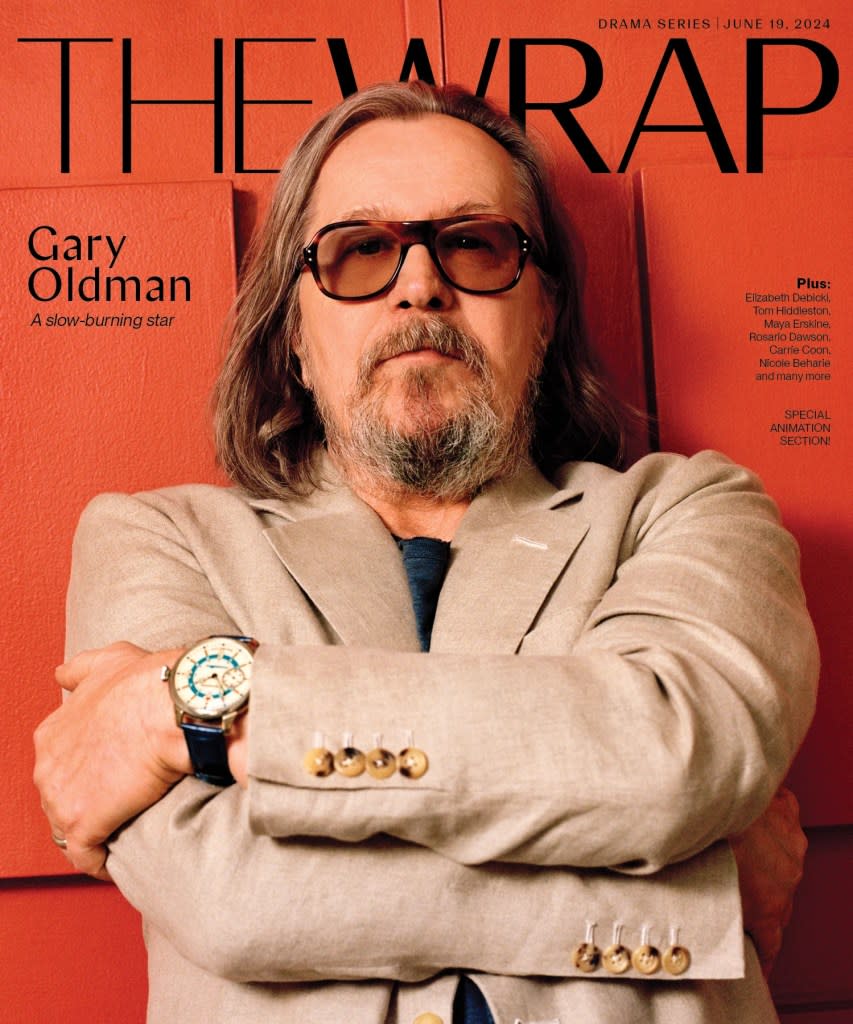
The post Inside the Sumptuous ‘Shōgun’ Costumes That Tell a Rich Story All Their Own appeared first on TheWrap.


